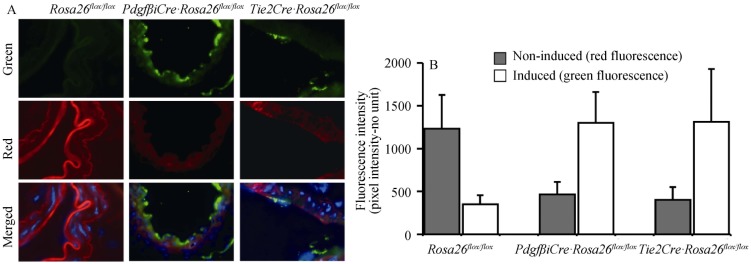Figure 4. Both Tie2Cre and PdgfβCre models had high efficiency in gene deletion to turn vascular endothelia from red to green fluorescence (n = 4 for each genotype and treatment).

Tie2Cre or PdgfβCre mouse was bred with Gt(ROSA)26Sor (Rosa26) mouse, resulting in either PdgfβCre Rosa26· or Tie2Cre Rosa26· genotype. The Rosa26 mouse was used as a control. These three mouse groups were induced to activate Cre which acts on Rosa26 allele. The Rosa26 genetic background is used as a reporter system to verify and validate the efficiency of the Cre mice. The Rosa26 includes its inducible fluorescence reporter system; i.e., all endothelia lining the vasculatures have red fluorescence (non-induced). The red fluorescence will be replaced with green fluorescence upon Cre recombinant (induction). (A): Abdominal aortas were isolated, stained with nuclear marker (blue), and imaged for their green/red fluorescence; (B): Quantitation analysis of vascular-lining endothelia indicates high efficacy of both PdgfbCre and Tie2Cre backgrounds to delete a specific gene in vascular lining endothelia.
